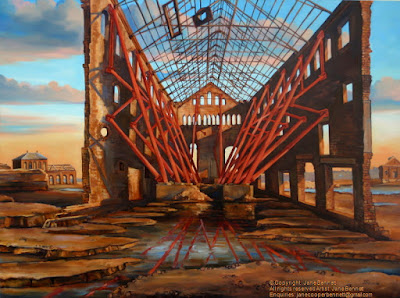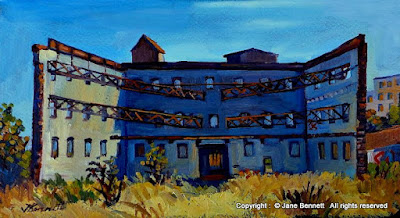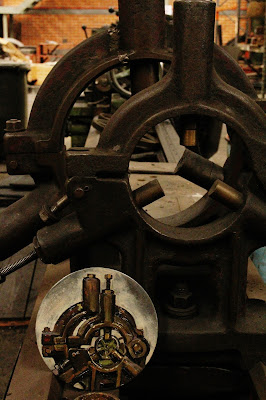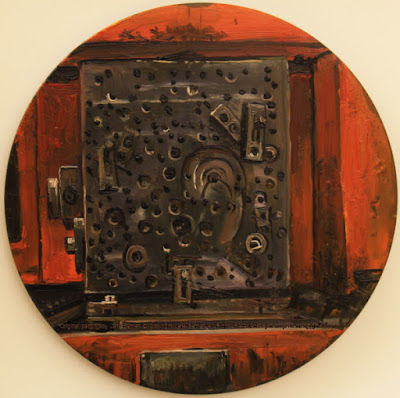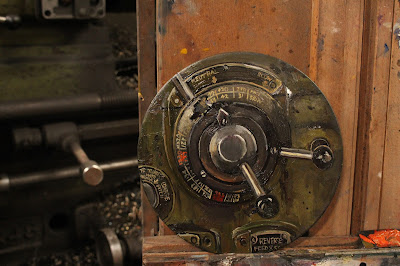wake up
look around
memorise what you see
it may be gone tomorrow
everything changes. Someday
there will be nothing but what is remembered
there may be no-one to remember it.
Keep moving
wherever you stand is ground zero
a moving target is harder to hit
"Ground Zero" by Michael Dransfield
 |
| AGL38 'AGL Site, Mortlake' 2004 oil on canvas 75 x 100 cm Available for sale |
In 1884, the Australian Gas Light Company purchased 32 hectares of land at Mortlake and began gas production there on the 23rd May 1886.
The A.G.L. Gasworks at Mortlake boasted grandiose structures modelled on the Beckton Works in East London. It was probably no coincidence that the engineer in charge of works, Thomas Bush, had previously been employed at Beckton.
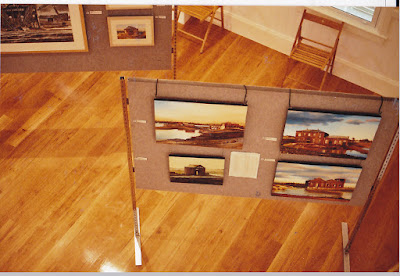 | |
| Exhibition of AGL site Mortlake paintings in Breakfast Point Community Centre 2004 |
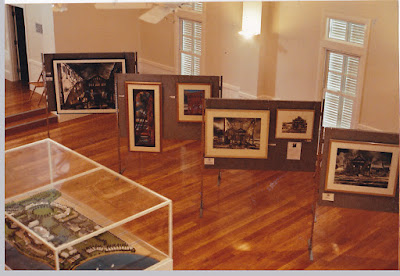
in Breakfast Point Community Centre 2004
Extensive remediation had begun. As a century’s worth of stinking coal tar waste was removed from the site, networks of channels were carved through the glowing sandstone surrounding the C.W.G. Building. After rain, these channels would fill with water, becoming a network of canals and lakes reflecting the ruins.
A terrifying 40 metre chasm had been excavated in front of it to remove the coal tar residue. Against it the C.W.G. Building loomed overhead, neatly sliced in half and propped up with a mad cat’s cradle of eye-popping red bollards opening wide in front of me as though to welcome me with an embrace. I had to write myself a 'post it note' to attach to my easel to remind me not to walk backwards to admire my painting as there was only a couple of metres between my easel and a sudden drop!

Exhibition of AGL site Mortlake paintings
in Breakfast Point Community Centre 2004
The former
AGL Gasworks site has now been completely redeveloped into the controversial new gated suburb of Breakfast Point by Rosecorp.
The complex of white and pale beige apartments and townhouses is totally
unrecognizable from its industrial past.
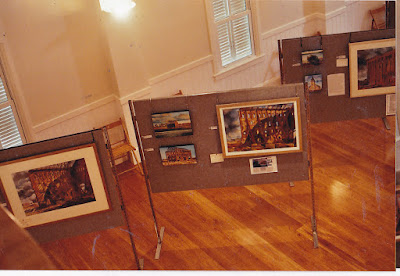
Exhibition of AGL site Mortlake paintings
in Breakfast Point Community Centre 2004
To coincide with the opening of their new suburb, Rosecorp and the CFMEU jointly invited me to hold a solo exhibition in their freshly built Community Hall.
My paintings consisted almost entirely of renditions of the C.W.G. Building, which had recently been demolished.
Irony totally intentional.
Related Posts


